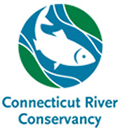--- All Sites ---
Abbey Brook
Amethyst Brook
Amherst Lake
Ashuelot River (South Branch) at Rte 32
Ashuelot River (South Branch) Upstream of MRHS
Ashuelot River at Cresson Bridge
Ashuelot River at Gilsum
Ashuelot River at Hinsdale
Ashuelot River at Marlow
Ashuelot River at Mountain Rd
Ashuelot River at Pillsbury
Ashuelot River at Rte 101
Ashuelot River at Stone Arch Bridge
Ashuelot River at the mouth of the South Branch
Ashuelot River at Thompson Covered Bridge
Ashuelot River at Winchester
Ashuelot River Upstream of Keene WWTF
Banas Farm-Ware R
Barbour Brook
Barbour Brook
Beaver Brook RT-44 crossing in Brownsville behind Town Hall
Beaver Brook, Off VT-9
Bennet St-Ware R
Benton Brook
Black River (North Branch - Stoughton Pond)
Black River at Cavendish Gorge
Black River at Greven Field
Black River at Tolles Dam
Black River North Branch at rope swing (Little Ascutney Rd)
Black River North Branch at Twentyfoot Hole
Black River trib (Branch Brook - Buttermilk Falls)
Broad Brook at Broad Brook, CT
Broad Brook, near Fort Dummer State Park
Buck River
Bunnell Brook
Cherry Brook
Cherry Brook
Cherry Brook
Cherry Brook
Cherry Brook
Cherry Brook
Cherry Brook
Chickley River, Tower Rd
Chicopee - Indian Orchard access
Chicopee - Lower Red Bridge access
Chicopee - Putts Bridge access
Chicopee-Collins Dam
Clam River
Clesson Brook, Buckland Rec Area
Connecticut River at Barton Cove, Gill at State Boat Ramp
Connecticut River at Berchulski Fisherman Access
Connecticut River at Brunelles Marina
Connecticut River at Cromwell Landing
Connecticut River at East Hartford, Dock at Great River Park
Connecticut River at Glastonbury, Dock at Glastonbury Boat Launch
Connecticut River at Goodwin College/CT River Academy
Connecticut River at Haddam, Dock at Haddam Meadows Boat Launch
Connecticut River at Jones Ferry River Access Center Boat Launch
Connecticut River at Log Pond Cove
Connecticut River at Medina Street Boat Ramp
Connecticut River at Middletown, Dock at Riverfront Park
Connecticut River at North Riverfront Park
Connecticut River at Northampton Boat Launch
Connecticut River at Northampton DCR/UMASS Boat Dock
Connecticut River at Pauchaug Brook Boat Launch, Northfield
Connecticut River at Pioneer Valley Yacht Club
Connecticut River at Putney,VT below Sacketts Brook
Connecticut River at Rocky Hill, Rocky Hill Boat Launch
Connecticut River at Sunderland Boat Ramp
Connecticut River at the Rock Dam
Connecticut River at Thompsonville
Connecticut River at Windsor Meadows State Park
Connecticut River just upstream of Saxtons River, VT
Connecticut River Oxbow, Easthampton at State Boat Ramp
Cooley Brook (Chicopee R Watershed)
Cooley Brook at Laurel Park Footbridge
Cooley Brook, Upstream of Laurel Street Culvert
Danforth Brook-
Davitt Bridge
Deerfield River at Stillwater Bridge
Deerfield River at Sunburn Beach
Deerfield River, 5 & 10 Bridge
Deerfield River, Gardners Falls
Deerfield River, Near Academy at Charlemont
Deerfield River, Near Deerfield Academy
Deerfield River, Shunpike Rest Area
East Branch North River, above Jacksonville WWTF
East Branch North River, below Jacksonville WWTF
East Branch North River, Foundry Village Rd Ballfields
East Putney Brook at Mill Brook Rd Intersection
East Putney Brook, River Rd S culvert swimming hole
Ellis Brook
Fall River
Falls Brook at the Ottauquechee River Confluence
Farmington River - Satan’s Kingdom State Recreation Area
Farmington River at Grist Mill Dam
Farmington River at Paine Boathouse crew
Farmington River at Paine Boathouse crew dock
Farmington River at Pleasant Street Park Boat Launch
Farmington River at River Street Park
Farmington River at Riverside Road boat launch
Farmington River at Route 187 Bridge
Farmington River at Town Gardens
Farmington River Burlington Farmington Canal Heritage Trail
Flood Brook, End of Brophy Lane
Forest Lake
Fort River at Bay Rd crossing
Fort River at Groff Park
Fuller Brook
Fuller Rd
Green River in Colrain
Green River Swimming and Recreation Area
Green River, below Timber Crib Dam
Green River, Between MA-2A and RR Bridge
Green River, Green River Park
Green River, Hinesburg Rd
Green River, Off Colrain St
Green River, VT/MA State Line
Grochmal St
Hockanum River at Rockville
Hockanum River near East Hartford
Hop Brook, US RT 10 Bridge, Ensign Bickford
Hubbard River
Kedron Brook at Teagle Park
Kedron Brook, Above GMHA
Kedron Brook, Above WWTF
Kedron Brook, Below Horse Stables
Lake Pauline, Plymouth VT (aka Reservoir Pond)
Lake Rescue, Plymouth VT
Lake Warner Boat Ramp
Laviolette Field
Lowell Lake
Lower Millpond, Millside Park
Mad River at Smith Pond
Mad River, Meadow St
Mad River, Rte 8
Mad River, Rugg Brook Rd
Manhan River at Dwyer Conservation Area
Manhan River off of Mill St
Mattabesset River at Route 372
Middle Branch Williams, just above Williams R. confluence
Middle Branch Williams, School St Walking Bridge
Mill Brook above swim area near I-91 overpass
Mill Brook behind Windsor HS athletic field
Mill Brook Bowers covered bridge crossing
Mill Brook RT-44 bridge above Windsor Minerals
Mill Brook RT-44 bridge east of village
Mill Brook RT-44 bridge west of Brownsville
Mill Brook upstream of Hewett Rd bridge crossing
Mill Brook, East Street Bridge
Mill River near Arcadia Wildlife Sanctuary
Mill River near Hinckley Street
Mill River, Mill Site Road
Mill River, Northampton at Rope Swing off Smith College Path
Mill River, Upstream of Leeds Dam
Millers River at Cass Meadow
Millers River at Confluence with CT River
Millers River at Erving
Millers River at New Boston Rd-ORSF
Millers River at Orange Riverfront Park
Millers Winchendon Launch-River St.
Miner Brook
Minister Brook , Latimer Lane intersection Rte 10
Minnisunk Brook, Town Farm Dairy, ds runway
Morgan Brook, Bsullack Rd
Morgan Brook, Rte 181
Morgan Brook, Rte 44
Mouth of Cold Brook
Mouth of Hinesburg Brook
Mouth of Maple Brook
Mouth of Pond Brook
Mouth of Thompsonburg Brook
Nod Brook, Nod Brook WMA bridge
North Branch Ball Mountain Brook, Pikes Falls Swim Hole
North Branch Deerfield River downstream of Snow Lake
North Branch Deerfield River upstream of Snow Lake
North Branch Deerfield River, Above Wilmington Center
North Branch Deerfield River, East Dover Rd
North Branch Deerfield River, Just upstream of Harriman Reservoir
North Branch Deerfield River, Valley Trail Trailhead
North Branch Deerfield River, Wilmington Center Below Beaver Brook
North Branch Ottauquechee River
North River, upstream of Sunburn Beach
Ottauquechee River at Raeback Rd Bridge
Ottauquechee River at Route 100A Bridge
Ottauquechee River at Woodstock Union High School
Ottauquechee River, Above Bridgewater WWTF
Ottauquechee River, Above Taftsville Dam
Ottauquechee River, Above Woodstock WWTF
Ottauquechee River, Below Bridgewater WWTF
Ottauquechee River, Below Quechee WWTF
Ottauquechee River, Below Taftsville WWTF
Ottauquechee River, Below Woodstock WWTF
Ottauquechee River, Hartland Covered Bridge Area
Otter River at Baldwinville
Otter River at Rt 101 Crossing
Otter River at Rt 2A Crossing
Pequabuck River, Meadow Road
Phelps Brook, Rte 75 at MDC Poquonick
Poor Brook
Quaboag - Lucy Stone Park
Quaboag Pond access
Quaboag Rt 20
Quaboag Rt 32
Quaboag Rt 67/9 access
Quaboag Water St Palmer
Quaboag-USGS Gage
Roaring Brook above Roaring/Otto Confluence
Roaring Brook above WWTF
Roaring Brook below Mountain View Dr
Roaring Brook, Cottage Street Bridge
Rock River, Indian Love Call swim hole
Russell Brook, Weatogue Park/ Rte 10
Sacketts Brook at Sand Hill Rd crossing
Sacketts Brook, above WWTF
Sacketts Brook, below Paper Mill
Sacketts Brook, end of Mill St
Sacketts Brook, off Kimball Hill Rd
Sacketts Brook, Portal Bridge swim hole
Salmon Brook at Salmon Brook Park
Salmon Brook East Branch
Salmon Brook, Granbrook Park
Salmon River near East Hampton
Sandy Brook
Sawmill Brook
Saxtons River, above Barber Park Rd Bridge
Saxtons River, below Twin Falls
Saxtons River, just above Saxtons River village WWTF
Saxtons River, Off of Oak St, Below Main St Bridge
Saxtons River, Sandy Beach swim hole just south of Bellows Falls
Saxtons River, Stickney's field swim hole
Scantic River, 464 Hazard Ave
Scantic River, Broad Brook (Mill St.)
Scantic River, Broad Brook Road
Scantic River, Brood Brook Stream/ East Road
Scantic River, Durkee Road
Scantic River, Filterbeds
Scantic River, Four Bridges Road
Scantic River, Greenland Turns
Scantic River, Harrington Brook (Route 140)
Scantic River, Ketch Brook (Rye St)
Scantic River, Kibbe Grove Road
Scantic River, King Road
Scantic River, Old Melrose Bridge
Scantic River, Omelia Bridge
Scantic River, Powder Hollow
Scantic River, Quality Ave
Scantic River, Rt 190 Bridge
Scantic River, Rt 83
Scantic River, Somersville Mill Pond
Scantic River, Town Farm Road
Scantic River, Windsorville Pond
Shales Brook
Silver Brook
Silver Lake at dam
South Branch Williams River, Popple Dungeon & Zezza Rds
South River, Reeds Bridge Rd
State St
Stevens Rd
Still River, NCCC Walkway Bridge
Still River, Rte 20
Still River, Torrington
Still River, White Street Bridge
Sunset Lake, center of the floating bridge
Swift R - First Street access
Swift-Cold Spring access
Thomas Brook
Thompson Brook, Thompson Rd.
Tweed River near confluence with White River
Unnamed tibutary to Cherry Brook
Unnamed tributary between big pond and otis reservoir, DS
Unnamed tributary between big pond and otis reservoir, US
UNT-Grochmal
Utley Brook, Barker Rd Crossing
Wardsboro Brook, Wardsboro Center
Ware R - Grenville Park
Ware R - New Furnace
Ware R - Old Furnace
Ware R-3 Rivers
Ware R-Gibbs Crossing
Ware River Park-Above New Furnace
Ware-Church St
Ware-Danforth Brook-L
Ware-Danforth Brook-M
Ware-Danforth Brook-U
West Branch Farmington River, Barkhamstead Route 20
West Branch Farmington River, Barkhamstead Town Baseball Field
West Branch Farmington River, New Hartford
West Branch Farmington River, Otis Rte 8
West Branch Farmington River, Otis Rte 8 & N Main
West Branch Farmington River, Otis Tannery Rd
West Branch Farmington River, Sandisfield
West Branch Farmington, Tolland
West River at Cobble Ridge Rd
West River at Dummerston Covered Bridge
West River near Jelley's Deli
West River, 1/2 way between Londonderry & S Londonerry
West River, Brookline bridge, Hill Rd.
West River, Ellen Ware Rd. swim hole
West River, just upstream of West River Marina
West River, Rowes Rd downstream of Thompsonburg Brook
West River, swimming hole at West River Park
Westfield River at Pynchon Point Park
Wethersfield Cove at Cove Park Docks
Whetstone Brook, across from the Brattleboro Food Coop
Whetstone Brook, Behind Studio for the Arts
Whetstone Brook, Brattleboro Farmers Market
Whetstone Brook, Dettman Drive
Whetstone Brook, Meadowbrook Rd VT Land Trust Farm Parcel
Whetstone Brook, off of Williams St
White River at Gaysville Bridge
White River at Lions Club Park
White River at Mouth of Third Branch
White River at Peavine Park-Bethel
White RIver at Peavine Park-Stockbridge
White River at Pinch Rock
White River at Taylor Meadow Rd
White River at The Sharon Academy
White River at Watson Park
White River at West Hartford Bridge
White River, First Branch at Chelsea Rec Park
White River, First Branch at Mouth
White River, First Branch at Tunbridge Fairgrounds
White River, First Branch- Town Pool Tributary
White River, Second Branch at Dugout Rd
White River, Second Branch at Mouth
White River, Third Branch at Randolph Rec Park
White River, Third Branch at Riford Brook Rd
White River, Third Branch at Stock Farm Rd
Williams River, above Green Mtn Tpk & Pleasant St
Williams River, at RR bridge below Missing Link Rd
Williams River, Bartonsville bridge
Williams River, below Chester WWTF
WIlliams River, Brockaway Mills swim hole
Williams River, Church St.
Williams River, Rainbow Rock swim hole
--- All Cities ---
Agawam
Amherst
Ascutney
Athol
Avon
Baldwinville-Templeton
Barkhamsted
Barnard
Belchertown
Berlin
Bethel
Bondsville-Palmer
Braintree
Brattleboro
Bridgewater
Bridgewater Corners
Brookfield
Brookline
Buckland
Burlington
can
Canton
Cavendish
Charlemont
Chelsea
Chester
Chicopee
Colrain
Conway
Cromwell
CT
Deerfield
Dover
Dummerston
East Brookfield
East Granby
East Hampton
East Hartford
East Windsor
Easthampton
Enfield
Erving
Farmington
Gardner
Gilbertville/Hardwick
Gill
Gilsum
Glastonbury
Granby
Granville
Greenfield
Guilford
Haddam
Hadley
Halifax
Hancock
Hardwick
Hartford
Hinsdale
Holyoke
Indian Orchard/Springfield
Jacksonville
Jamaica
Keene
Killington
Lempster
Londonderry
Longmeadow
Ludlow
Marlow
Middletown
Monson
Montague
New Hartford
Newfane
Norfolk
North Hartland
Northampton
Orange
Otis
Palmer
Perkinsville
Plymouth
Proctorsville
Putney
Quechee
Randolph
Reading
Rochester
Rockingham
Rockville
Rocky Hill
Royalton
Sandisfield
Saxtons River
Sharon
Shelburne
Simsbury
Somers
South Hadley
South Londonderry
Springfield
Stockbridge
Sunderland
Swanzey
Taftsville
Templeton
Thompsonville
Three Rivers, Palmer
Tolland
Torrington
Townshend
Tunbridge
Wardsboro
Ware
Warren
Washington
Weathersfield
West Brattleboro
West Brookfield
West Hartford
West Windsor
Westminster
Wethersfield
Wilbraham
Wilmington
Winchendon
Winchester
Windsor
Woodstock


